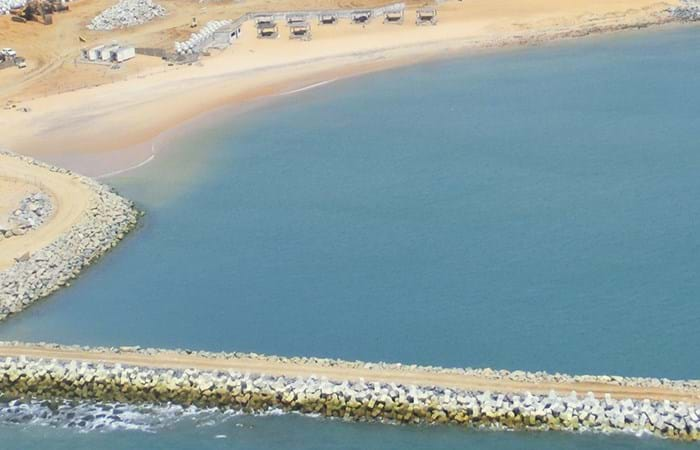The project was developed to arrest coastline erosion in the densely-populated centre of Cotonou caused by two phenomena: erosion and human interference along the West African coastline.
After Contract award, the first production and installation activities began in June 2012. Construction was completed in July 2014. The project scope encompassed the supply of the materials and the construction of seven groins (EPIs), a revetment with an approximate length of 300 meters, and a breakwater. A total of 2,680 meters of groin, revetment or breakwater have been built and 7.5 kilometers of coastline have been fixated. The materials supplied consisted of:
- 2,441 concrete Xblocs measuring 4 m3
- 32,000 m2 of geotextile
- 530,000 tonnes of rock of miscellaneous categories.
Including concrete aggregates, 545,000 tonnes of raw rock material corresponding to 21,750 truckloads was transported to the site, approximately 3,500 tonnes of cement in 137 twenty-foot containers was transported to the site. The Xbloc elements were produced under our own management using in-house expertise. A concrete laboratory was imported and operated by in-house personnel to ensure close quality monitoring and compliance with the specifications. Boskalis staff supervised the quarry operations. The quarries were located approximately 180 kilometers inland. Boskalis was responsible for loading from the stockpiles in the quarries. The installation spread consisted of one Hitachi 1200, three Caterpillar 385s, three wheelloaders Caterpillar 980, two Caterpillar 365s and four Caterpillar 740 dumpers.
